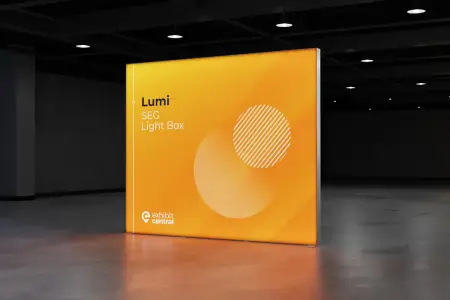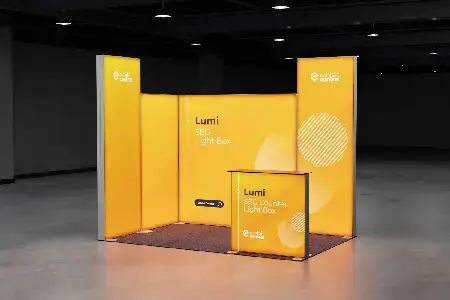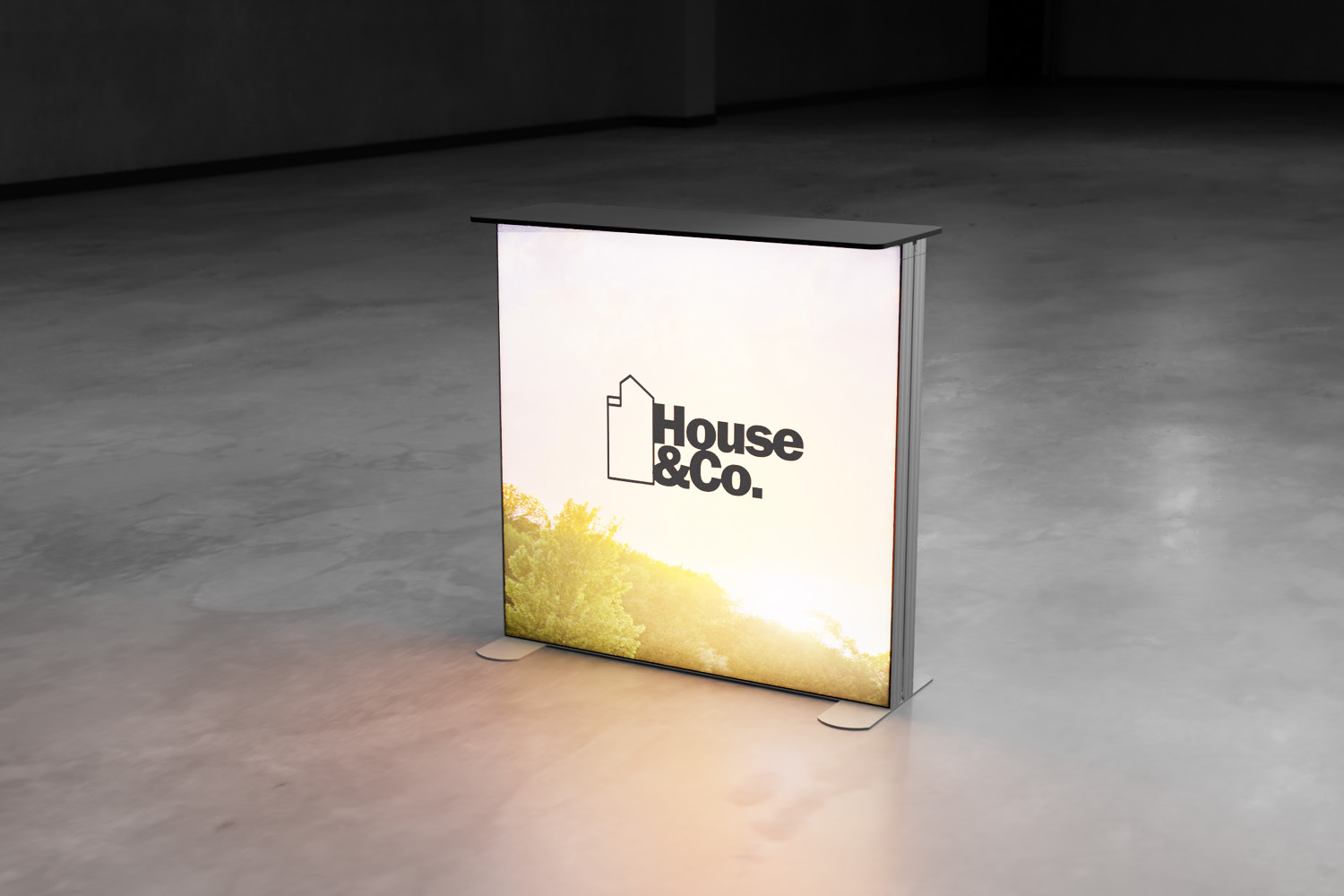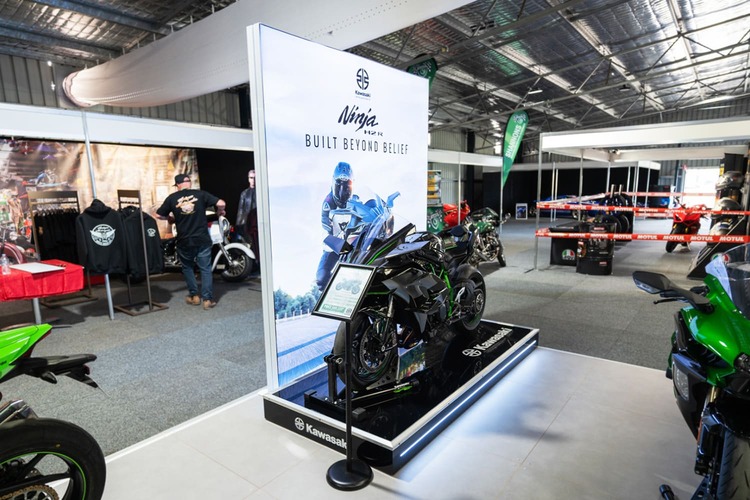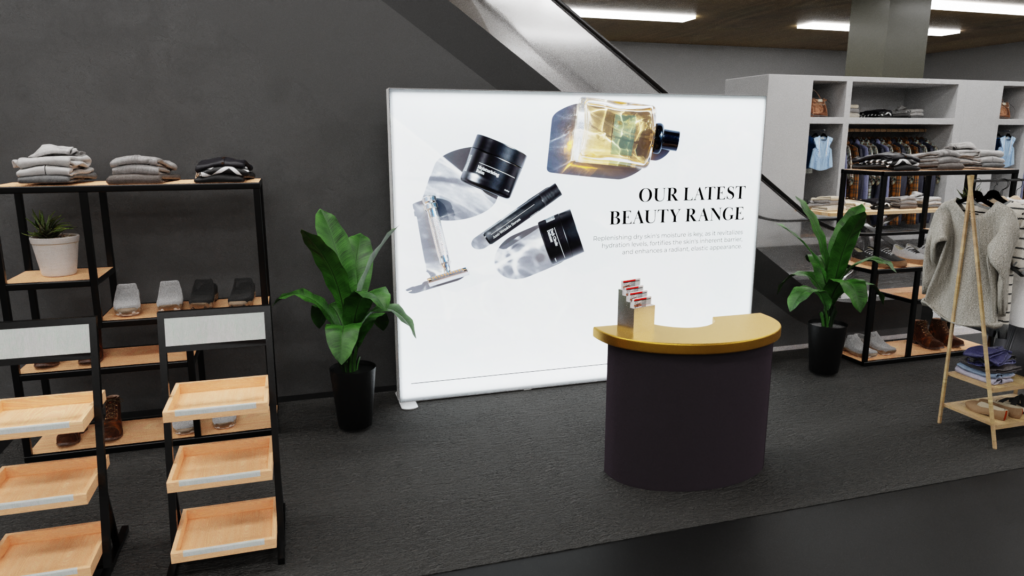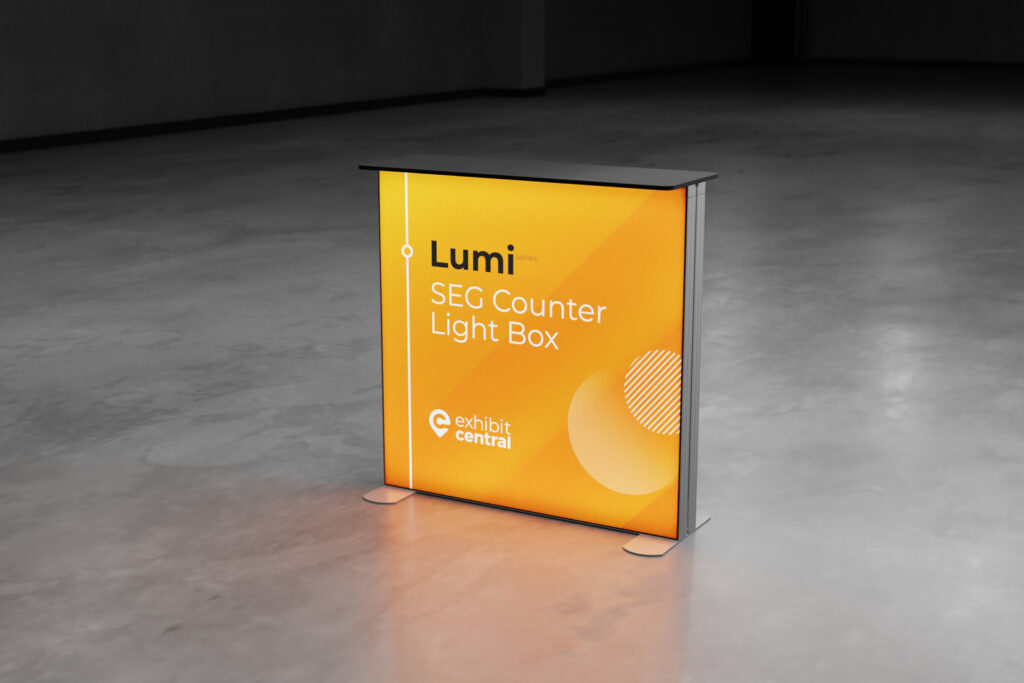Modular Light Box Displays: The multiple ways you can assemble our Lumi Light Boxes
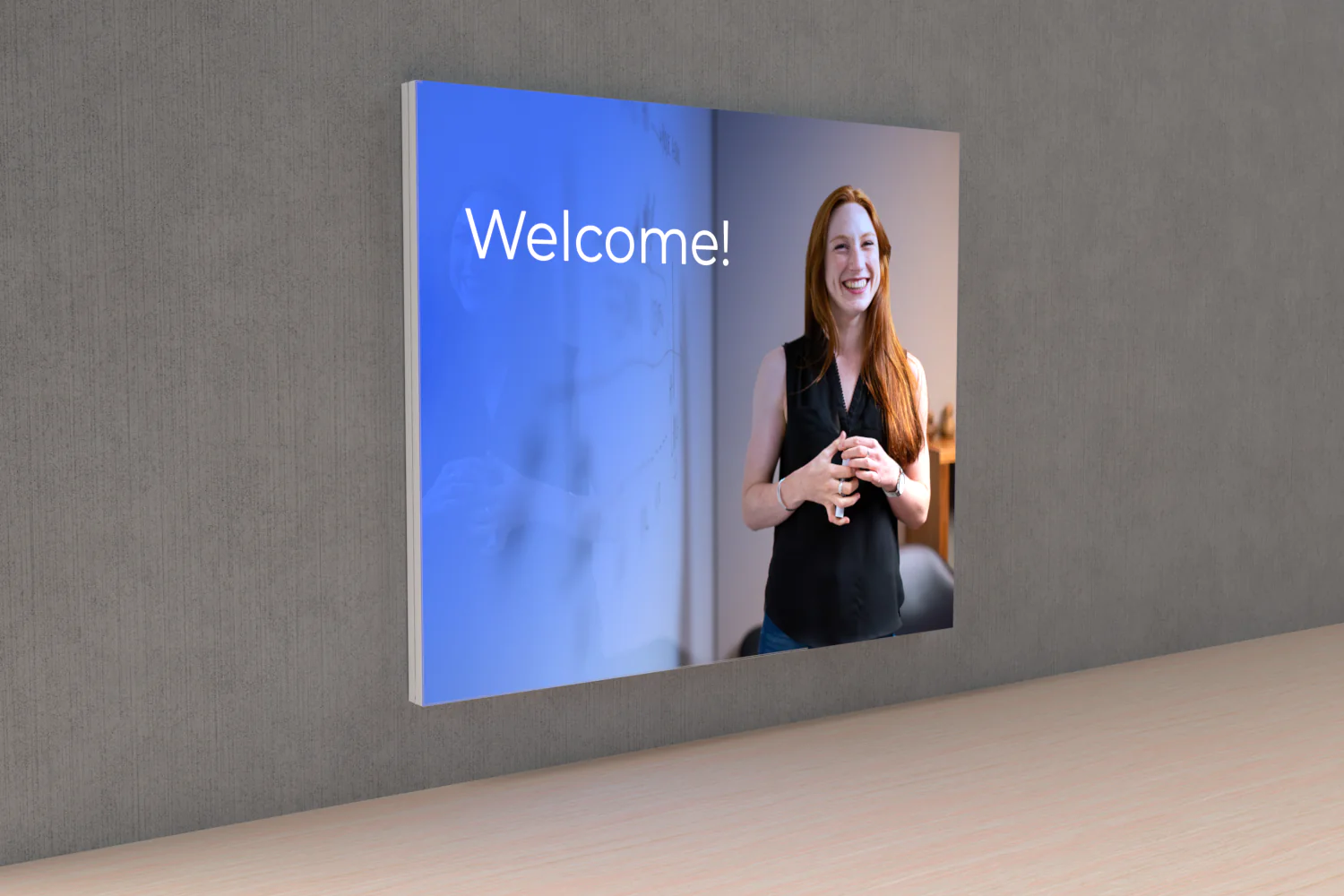
Modular exhibition stands have gained popularity in recent years due to their flexibility, convenience, and cost-effectiveness. Exhibit Central’s Lumi Light Box packages offer a range of versatile options for configuring, assembling, and setting up modular lightbox display.
In this article, we will explore the various setups and layouts available, discuss their advantages, and highlight the role of modular exhibition stand in projecting your business as socially responsible. Additionally, we will address the safety aspects and how modular stands meet statutory exhibiting guidelines in Europe and the USA.
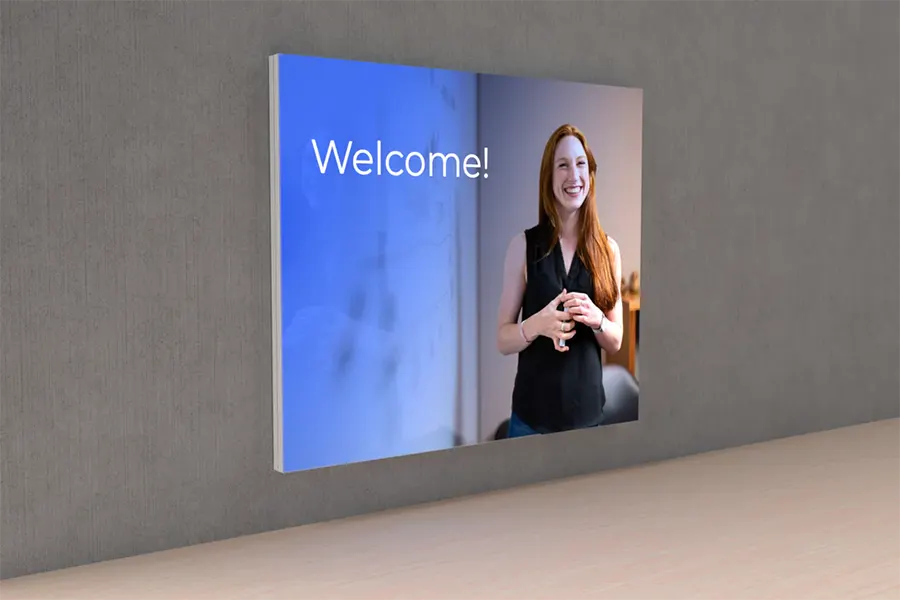



 By following these assembly instructions, you can easily set up the Lumi Light Box display and create a visually impactful exhibition stand. Remember to refer to the specific instructions provided by Exhibit Central for your particular package, as slight variations in assembly steps may exist depending on the model or configuration you have chosen.
By following these assembly instructions, you can easily set up the Lumi Light Box display and create a visually impactful exhibition stand. Remember to refer to the specific instructions provided by Exhibit Central for your particular package, as slight variations in assembly steps may exist depending on the model or configuration you have chosen.
Modular stands VS custom exhibition stands VS custom-modular exhibition stands: Distinctions Between the Three
Modular stands, custom exhibition stands, and custom-modular exhibition stands are distinct concepts in the realm of exhibitions and trade shows. Each type offers unique advantages and characteristics that cater to different requirements and budgets. Modular stands are pre-designed, standardised structures made up of interchangeable components. These components can be easily assembled and disassembled, allowing for flexibility and reusability. The main advantage of modular stands lies in their cost-effectiveness and efficiency. They are typically more affordable than custom-built stands since they utilise pre-existing designs and materials. Modular stands also offer convenience as they can be quickly set up and dismantled, making them ideal for frequent exhibitors or events with limited setup time. However, due to their standardised nature, modular stands may lack the bespoke elements and unique branding opportunities found in custom stands. On the other hand, custom exhibition stands are tailor-made structures designed from scratch to meet specific requirements and brand guidelines. These stands offer unlimited creative possibilities and can be customised in terms of size, layout, materials, and branding elements. Custom stands provide a distinctive and impactful presence on the exhibition floor, effectively reflecting a company’s unique identity and message. While custom stands offer greater creative freedom, they require more time and resources for design, construction, and logistics. They are typically more expensive than modular stands and may not be as easily adaptable for different shows or events. In the middle ground, custom-modular exhibition stands combine the advantages of both modular and custom stands. They are hybrid solutions that incorporate pre-designed modular components with custom elements to achieve a balance between cost-efficiency and uniqueness. Custom-modular stands offer the flexibility of reconfiguring the modular components to suit different booth sizes and layouts while incorporating bespoke features to align with brand requirements. These stands provide a personalised touch and allow for creative branding options, ensuring a distinct presence on the exhibition floor. Although custom-modular stands may involve a higher initial investment than pure modular stands, they offer greater versatility and cost savings compared to fully custom stands. In summary, modular stands are cost-effective and easy to set up, custom exhibition stands provide maximum customisation and visual impact, while custom-modular stands strike a balance between cost-efficiency and uniqueness. The choice between these types of stands ultimately depends on factors such as budget, branding requirements, flexibility needs, and the specific goals of each exhibitor or event.Understanding Modular Exhibition Stands
Modular lightbox installation is distinct from custom exhibition stands and custom-modular exhibition stands. Custom stands are built from scratch to meet specific requirements, while custom-modular stands combine pre-designed modules with custom elements. In contrast, modular lightboxes consist of pre-engineered components that can be easily reconfigured and reused for different events. This modularity offers flexibility in design, layout, and adaptability to different exhibition spaces.How do you put together a light box?
Configuring and Assembling Exhibit Central’s Lumi Light Box Packages
Exhibit Central’s Lumi Light Boxes provide a wide range of options for creating stunning lightbox displays. The packages include modular frames, LED light panels, fabric graphics, connectors, and other essential components. Let’s explore some of the setups and layouts:Wall-mounted Lightbox
The wall-mounted configuration is ideal for spaces with limited floor area. It involves attaching the modular frame to a wall and mounting the LED light panels and fabric graphics. This setup is perfect for creating impactful backdrops, showcasing branding elements, or displaying product images. The wall-mounted lightbox is easy to assemble and can be quickly installed in various settings.
Freestanding Lightbox
For larger exhibition spaces, the freestanding configuration offers a visually striking display. The modular frames are connected to create a sturdy structure that can stand on its own. The LED light panels, and fabric graphics are integrated, resulting in an eye-catching, illuminated centrepiece. The freestanding lightbox is versatile and can be positioned strategically to attract attention from different angles.
Corner Lightbox
The corner configuration utilises the modular frames to create a seamless display that fits into corners or right-angle spaces. This setup maximises the use of available space and ensures a smooth flow within the exhibition booth. The corner lightbox is an excellent choice for showcasing multiple products or creating interactive zones within your exhibit.
Advantages and Use-Cases
Each setup offers unique advantages and is suitable for specific use-cases. Here are some examples:High Visibility and Branding
The illuminated lightbox displays enhance visibility and create a captivating visual impact. This makes them ideal for branding, highlighting key messages, or showcasing product images. Whether wall-mounted, freestanding, or corner configuration, the Lumi Light Box packages provide an attention-grabbing solution to ensure your brand stands out in a crowded exhibition.Modular Flexibility
A Modular exhibition stand offer flexibility in adapting to different booth sizes and layouts. Exhibit Central’s Lumi Light Box packages can be easily reconfigured and expanded to accommodate varying exhibition spaces. This flexibility allows you to create unique layouts for each event without the need for substantial investments in new display systems.Reusability and Cost-Effectiveness
Modular stands are designed for reusability, making them a cost-effective choice for businesses participating in multiple exhibitions. The Lumi Light Box packages are built to withstand frequent assembly and disassembly, ensuring durability and longevity.How To Assemble the Lumi Light Box Display
Assembling the Lumi Light Box display is a straightforward process. Here is a step-by-step guide on how to assemble the display:1.Unpack the Components:
Start by unpacking all the components of the Lumi Light Box display package. These typically include the modular frames, LED light panels, fabric graphics, connectors, and any additional accessories.2.Connect the Modular Frames:
Take the modular frames and identify the corresponding connectors. Connect the frames together using the connectors to create the desired configuration. The connectors are designed to securely join the frames, ensuring stability and structural integrity.3.Attach the LED Light Panels:
Once the modular frames are connected, it’s time to attach the LED light panels. The LED light panels are usually designed to fit seamlessly into the frame slots. Slide the panels into the designated slots, making sure they are evenly distributed across the display.4.Install the Fabric Graphics:
Next, install the fabric graphics onto the modular frames. The fabric graphics are custom printed with your branding or desired visuals. Carefully align the graphics with the frame openings and attach them using the provided fasteners or tensioning mechanisms. Ensure that the graphics are taut and wrinkle-free for a professional appearance.5.Connect the Power Supply:
If your Lumi Light Box display requires a power supply for the LED light panels, locate the power cord and connect it to the designated port on the display. Make sure the power supply is securely connected to provide a steady power source for the illuminated panels.
6.Test the Display:
Before finalising the setup, it’s important to test the display to ensure everything is functioning correctly. Switch on the power supply and verify that all the LED light panels are evenly illuminated. Check for any flickering lights or connectivity issues and adjust if necessary.7.Fine-tune and Secure the Display:
Once you are satisfied with the setup and functionality of the Lumi Light Box display, take a moment to fine-tune the positioning and alignment. Make any necessary adjustments to ensure the display is level, stable, and visually appealing. Use any provided stabilising or securing mechanisms to enhance the display’s stability, especially for freestanding or corner configurations.8.Reconfiguring and Disassembly:
One of the advantages of modular exhibition stands is their reconfigurability. If you need to change the layout or adapt the display for a different event, simply follow the reverse steps to disassemble the Lumi Light Box display. Carefully disconnect the modular frames, remove the fabric graphics, and detach the LED light panels. Pack all the components securely for storage or transportation. By following these assembly instructions, you can easily set up the Lumi Light Box display and create a visually impactful exhibition stand. Remember to refer to the specific instructions provided by Exhibit Central for your particular package, as slight variations in assembly steps may exist depending on the model or configuration you have chosen.
By following these assembly instructions, you can easily set up the Lumi Light Box display and create a visually impactful exhibition stand. Remember to refer to the specific instructions provided by Exhibit Central for your particular package, as slight variations in assembly steps may exist depending on the model or configuration you have chosen.
Exhibition Stand Construction Safety
When setting up exhibition stands, ensuring construction safety is paramount. Modular exhibition display systems offered by Exhibit Central adhere to stringent safety requirements. The materials used in their construction are robust and strong, providing stability and security to the displays. This is especially crucial in Europe, where there are minimum safety requirements for exhibition booths to protect visitors and the environment.Meeting Statutory Exhibiting Guidelines
Exhibition laws and regulations vary across different countries and regions. However, modular stands have the advantage of meeting statutory exhibiting guidelines in Europe and the USA, among many other countries worldwide. By choosing Exhibit Central’s Lumi Light Box packages, you can rest assured that your display complies with the necessary regulations, eliminating any potential legal complications or penalties.Role of Modular Exhibition Stands in Social Responsibility
In addition to their functional benefits, a modular lightbox display plays a role in projecting your business as socially responsible. These stands are designed with sustainability in mind, offering eco-friendly solutions for businesses aiming to reduce their environmental footprint. Modular exhibition display systems can be reused and reconfigured, minimising waste and contributing to a more sustainable exhibition installation. Furthermore, the modular nature of these stands allows for easy transportation, reducing carbon emissions associated with shipping bulky and heavy custom-built stands. By choosing modular lightbox displays for your exhibition stand installation, businesses demonstrate their commitment to responsible and sustainable practices.Conclusion
Exhibit Central’s Lumi Light Box packages provide a versatile and visually appealing solution for configuring, assembling, and setting up modular exhibition stands. With various setups such as wall-mounted, freestanding, and corner configurations, businesses can create stunning lightbox displays tailored to their specific needs. The advantages of modular stands, including flexibility, reusability, cost-effectiveness, and adherence to safety guidelines, make them a preferred choice for businesses participating in exhibitions. Furthermore, by utilising modular exhibition stands, businesses can project themselves as socially responsible by embracing sustainable practices. In a competitive exhibition environment, it is essential to create a captivating and memorable brand presence. Exhibit Central’s Lumi Light Box packages empower businesses to achieve just that, offering visually striking displays that leave a lasting impression on visitors. By combining actual images and videos showcasing the different setups and layouts, this article has provided insights into the advantages and use-cases of Exhibit Central’s Lumi Light Box packages. Whether you’re looking for a wall-mounted display, a freestanding centrepiece, or a corner configuration, these modular solutions offer the flexibility, convenience, and safety necessary to make your exhibition booth shine.Share
Facebook
Twitter
Pinterest
LinkedIn
Author
Geim Bernard Eran
Geim, a seasoned Product Manager at Exhibit Central, efficiently manages product orders, stock count, and research and development initiatives, demonstrating a sharp focus on market trends and dedication to excellence. He enhances customer experiences through product training, creating compelling marketing materials, and user-friendly instruction manuals, all while ensuring efficient product management and development.
Latest posts
Retail Signage: The Silent Salesperson Boosting Your Business
Retail signage is the unsung hero of the retail world. It’s the silent salesperson that greets customers, informs them about …
Display Counters for Retail Stores: Attract Customers and Boost Sales
Display retail counters are the workhorses of retail stores, playing a crucial role in showcasing products, facilitating sales, and enhancing …
Expo Marketing: A Comprehensive Guide to Maximise Your ROI
Expo marketing, also known as trade show marketing or exhibition marketing, is a powerful strategy for businesses to connect with …
Design Your Dream Exhibition: A Step-by-Step Guide to Exhibition Space Design Plans
Imagine your ideal exhibition experience. Visitors flock to your space, eyes wide with curiosity. They’re not just passively browsing; they’re …

